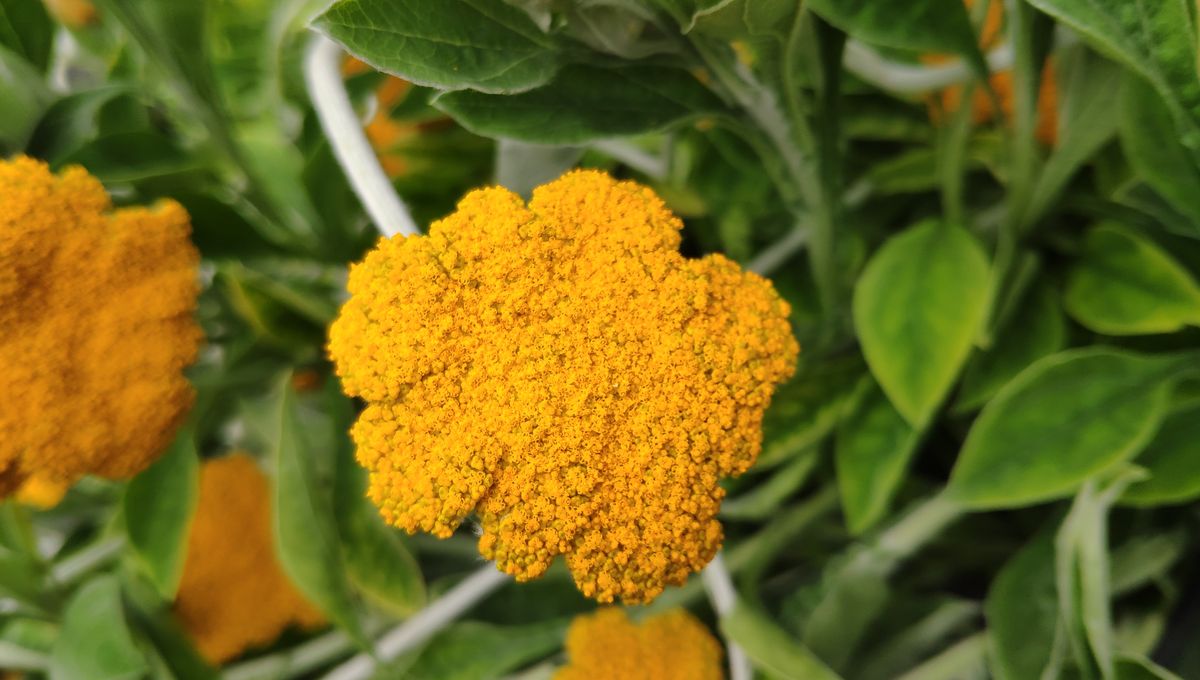
A plant that is totally unrelated to cannabis has been found to produce large numbers of cannabinoids, the compounds responsible for the various pharmacological effects of weed. Known as the woolly umbrella (sometimes spelled “wooly”), the plant makes several of the same molecules present in cannabis as well as dozens of previously unknown cannabinoids, some of which may have medical properties.
Woolly umbrella – or Helichrysum umbraculigerum, to give it its proper name – is a South African flowering plant of the daisy family that is best known for smelling like curry. Historical sources hint at its use as an intoxicant in folk rituals and a study conducted decades ago indicated that it may contain cannabinoids, although until now researchers had never pinpointed the structure of these compounds.
After sequencing the plant’s genome and analyzing its chemical components, the authors of a new study were able to identify more than 40 cannabinoids in the leaves of the woolly umbrella. By comparison, cannabis produces well over 100 cannabinoids.
However, because cannabis-derived cannabinoids are found in the plant’s flowers, the commercial production of these compounds requires intensive cultivation practices which come at a high economic and environmental cost. In contrast, the study authors describe woolly umbrella as “a perennial, fast-growing, commercially viable plant source for bioactive cannabinoids.”
And while H. umbraculigerum doesn’t produce THC or CBD – the two most famous cannabinoids found in cannabis – it does manufacture large amounts of CBG, a cannabinoid that has shown promise as a treatment for neurological disorders, colon cancer, and various other medical conditions.
According to the researchers, cannabinoid signaling is “projected to have therapeutic potential in almost all human diseases.” For many patients, however, the psychoactive properties of THC are undesirable, which means medically relevant cannabinoids must be isolated from cannabis extracts.
The fact that the woolly umbrella doesn’t produce THC may therefore be an advantage and could allow for easier access to CBG and other cannabinoids without having to worry about patients getting stoned.
“We have found a major new source of cannabinoids and developed tools for their sustained production, which can help explore their enormous therapeutic potential,” explained study author Dr Paula Berman in a statement. After identifying the enzymes involved in the creation of these cannabinoids, the researchers were able to modify brewer’s yeast to produce the exact same compounds.
And while six of the cannabinoids identified in the woolly umbrella are also present in cannabis, the rest are completely new. “The next exciting step would be to determine the properties of the more than 30 new cannabinoids we’ve discovered, and then to see what therapeutic uses they might have,” said Berman.
Curiously, scientists still don’t fully understand why plants produce cannabinoids, although there is some evidence to suggest that they may help to deter predators and could even act as a kind of natural sunblock by protecting plants from ultraviolet rays.
“The fact that in the course of evolution two genetically unrelated plants independently developed the ability to make cannabinoids suggests that these compounds perform important ecological functions,” explained study author Professor Asaph Aharoni.
“More research is needed to determine what these functions are.”
The study is published in Nature Plants.
Source Link: Is The "Woolly Umbrella" The New Cannabis?